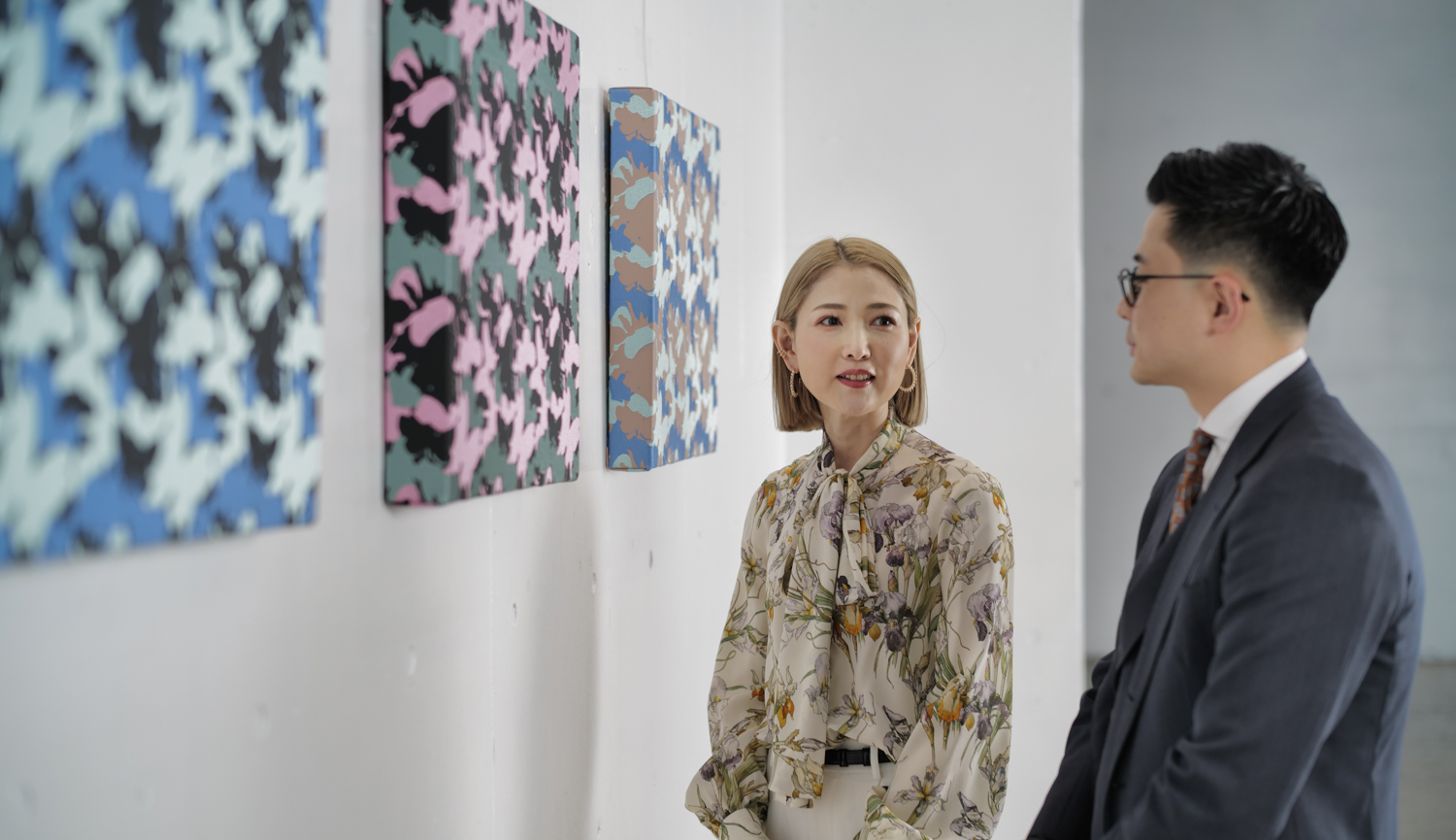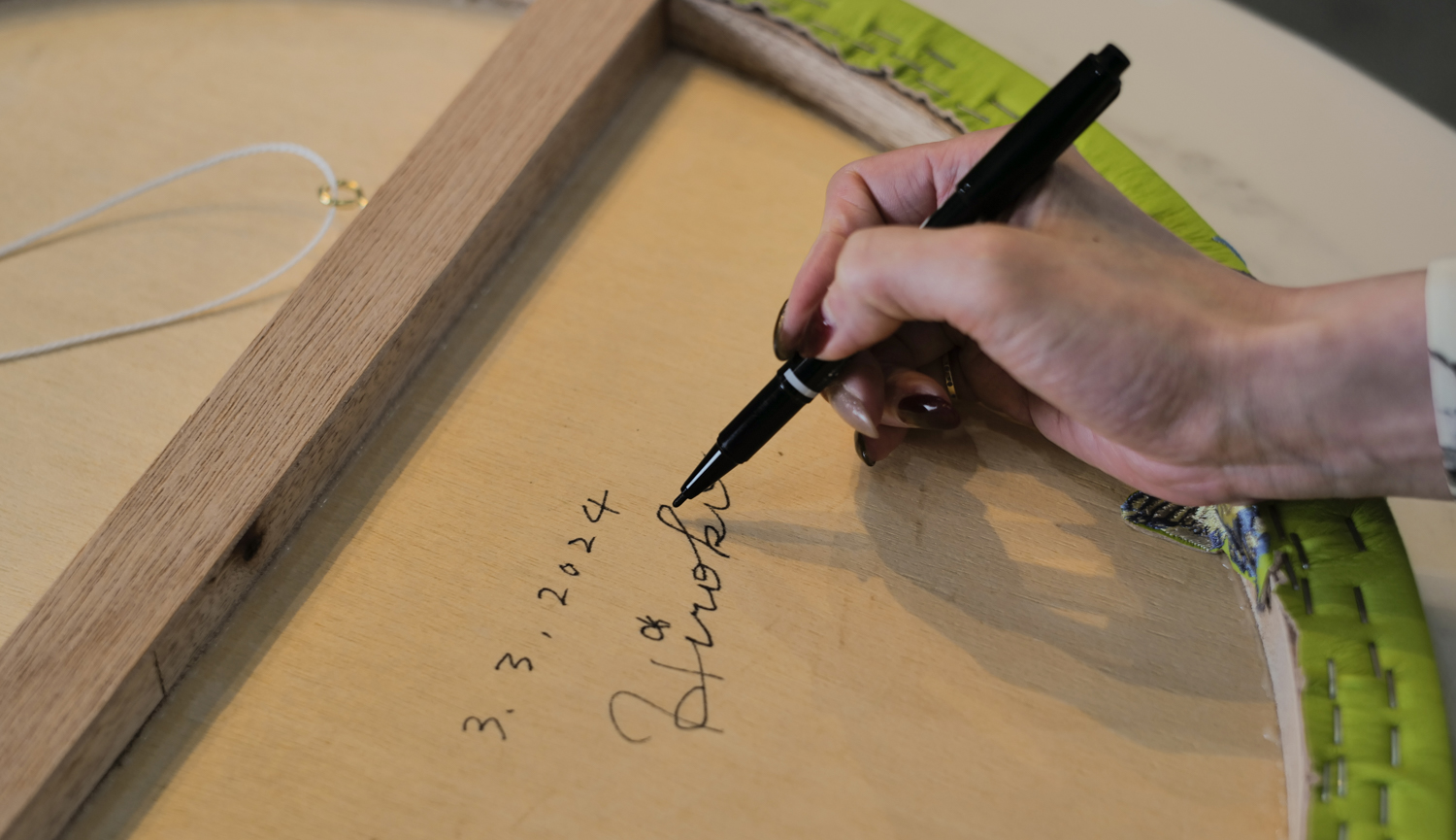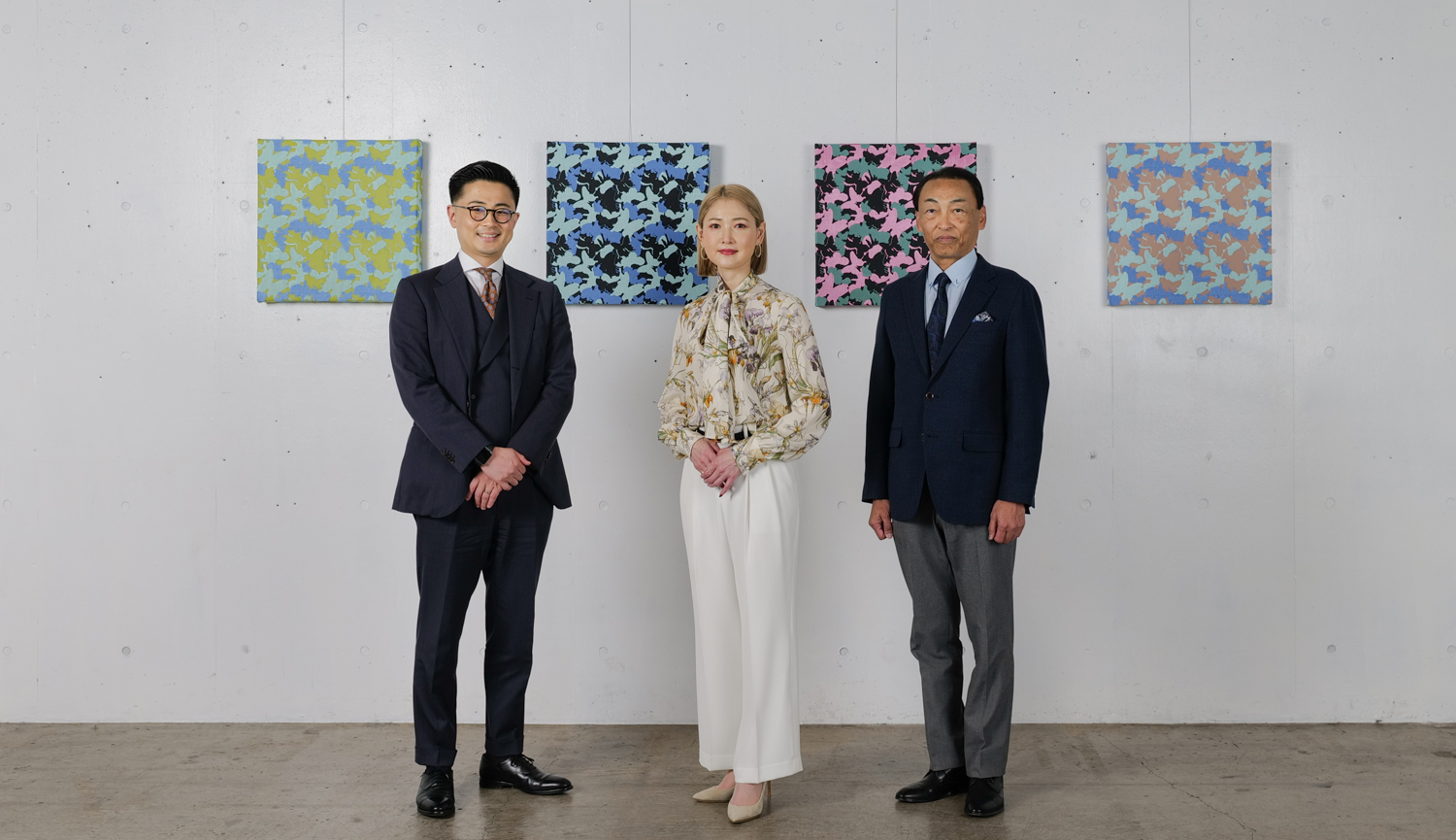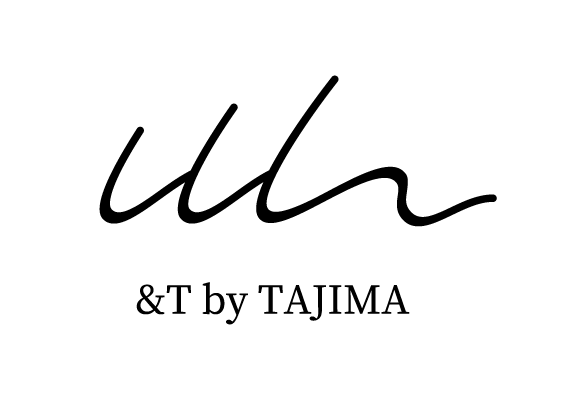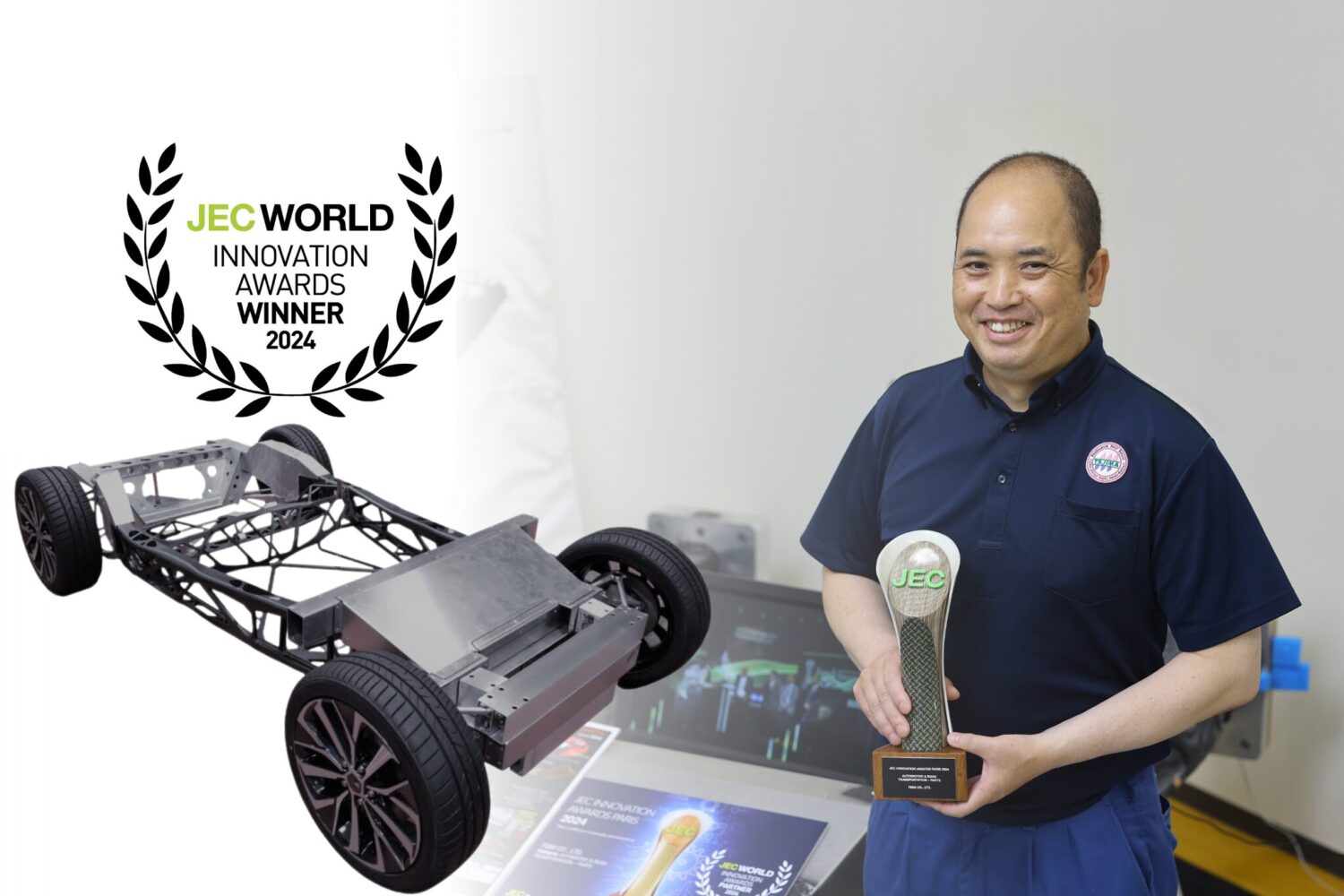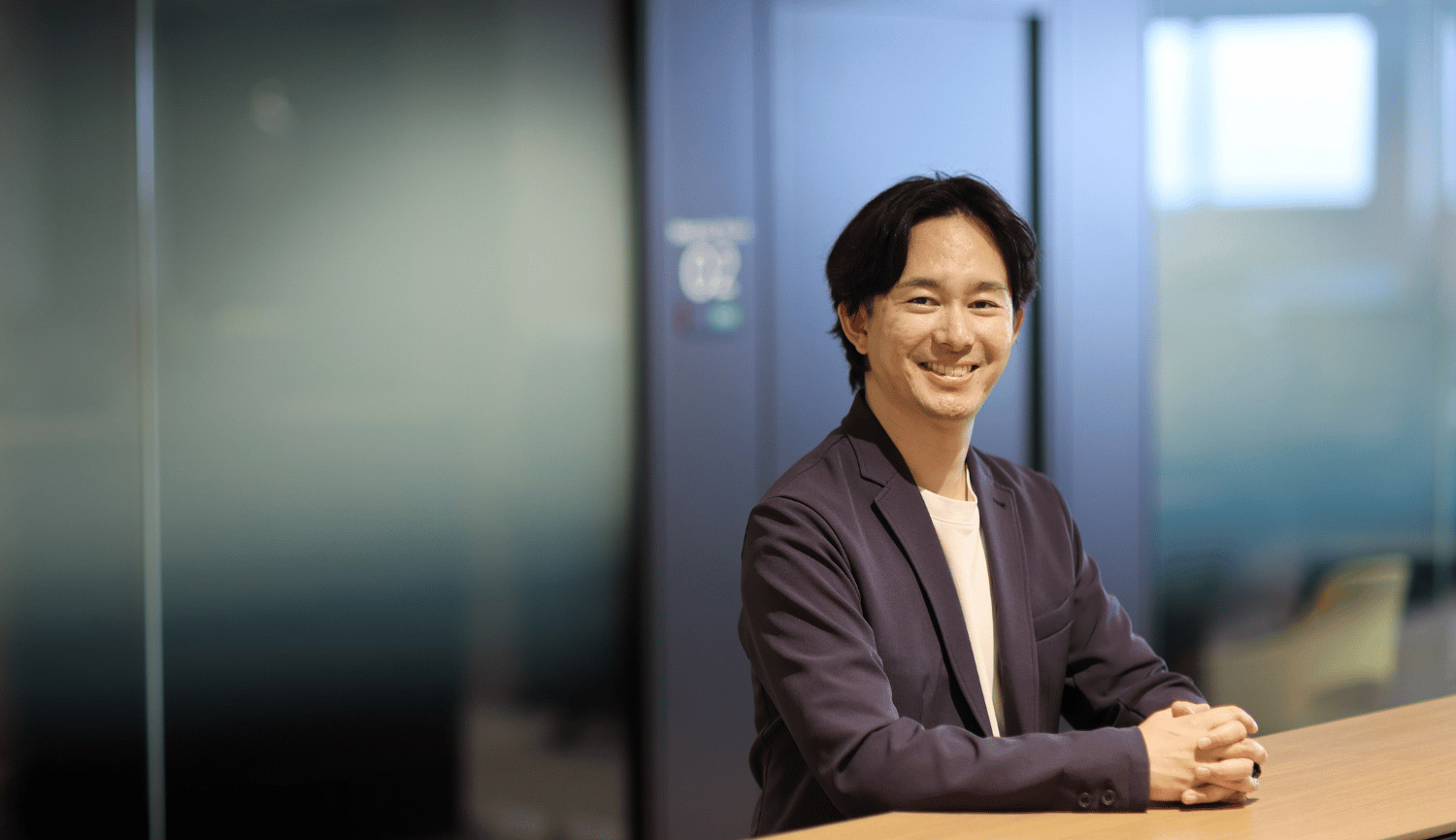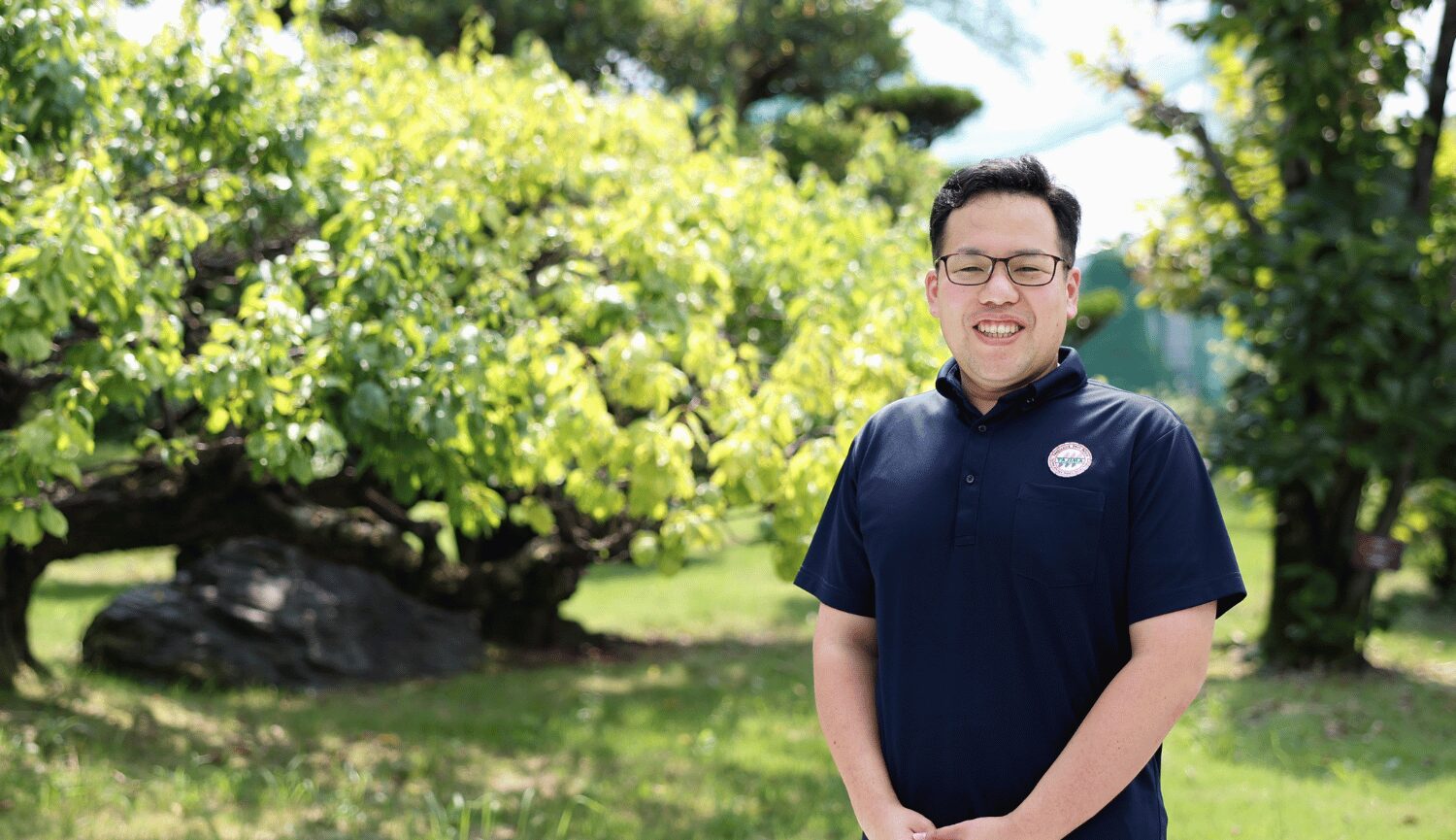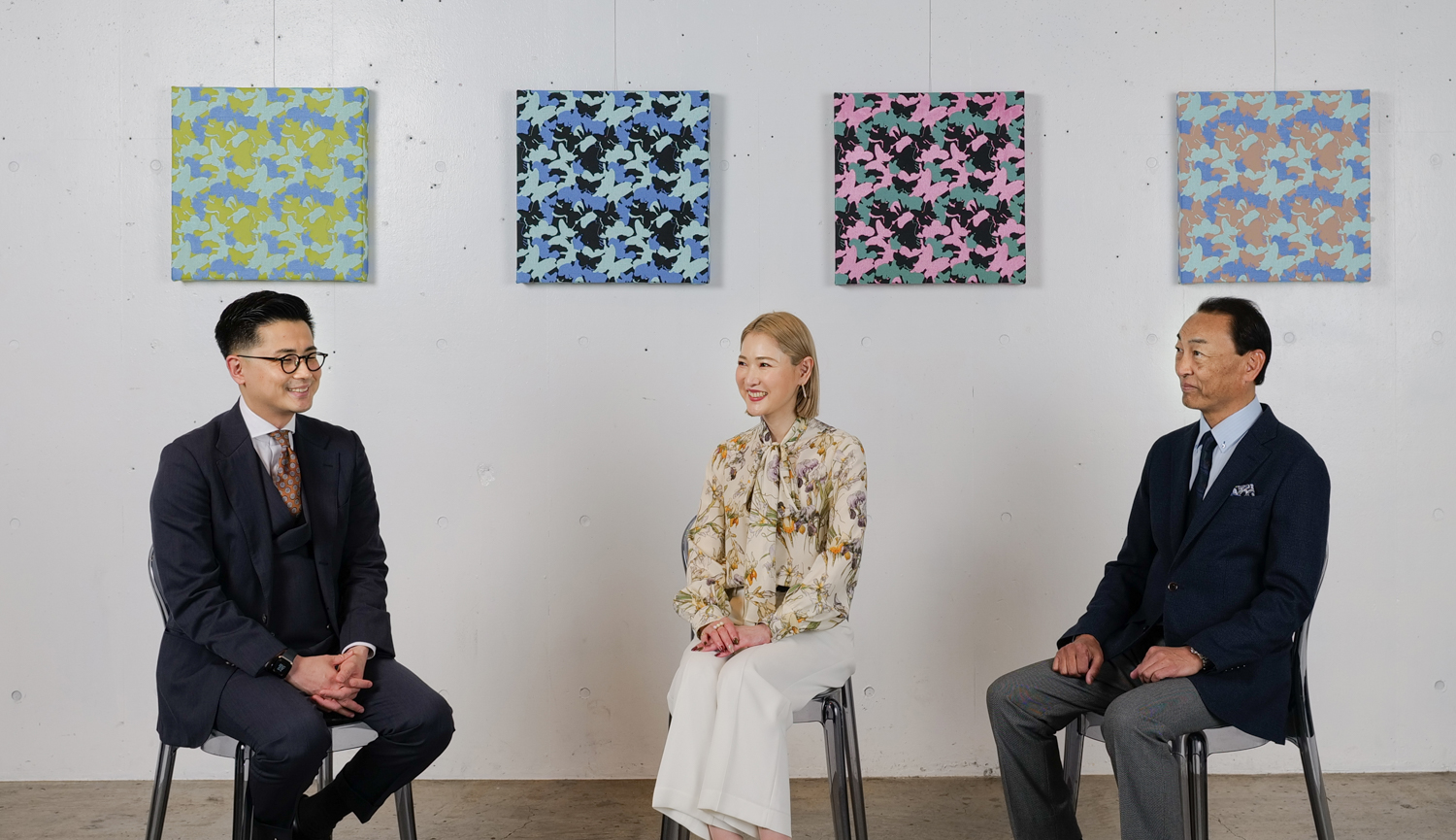
With "&T," we collaborate with contemporary artists in reappraising the value of embroidery.
Contemporary Nihonga Artist : Hiroko Otake
Tajima Industries Ltd. Representative Director and President: Hidetoshi Kojima Tajima Industries Ltd. Corporate Officer: Tetsuo Tokuda
Tajima Industries Ltd. has launched a project under the “&T” brand aimed at reappraising the value of traditional embroidery and exploring new ways of expression through it. This initiative, which seeks to create new works of embroidery in collaboration with contemporary artists, was inspired by the work of Contemporary Nihonga Artist Hiroko Otake.
Tajima Group’s Representative Director, Hidetoshi Kojima, and Tajima Industries Ltd.’s embroidery professional, Tetsuo Tokuda, invited Ms. Hiroko Otake to discuss her current projects and future possibilities.
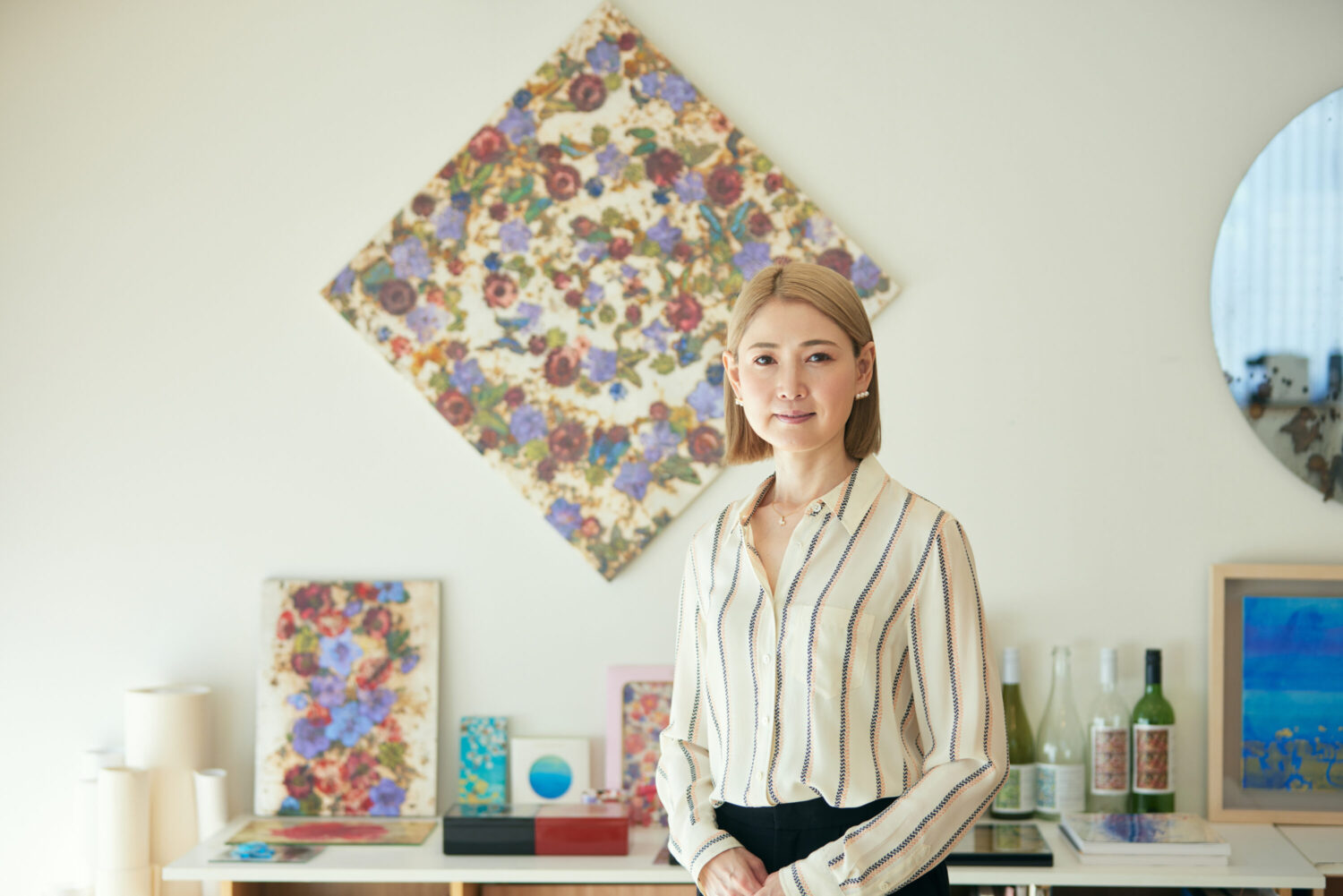
Hiroko Otake
Graduated from Tokyo University of the Arts with a major in Japanese Painting (Japanese-style Painting/Nihonga) in 2006. D. degree in 2011.Received the Emerald Grant Award (Tokyo National University of the Arts) in 2014.
Highly regarded both within and outside Japan for her development of new ways of expression using traditional Japanese painting techniques incorporating mineral pigments and metal leaf.
【Official website】https://www.hiroko-otake.com/
INDEX
Blending individual colors to create new expression
― To start, I would like to ask President Kojima about the aim of “&T” and the project’s background.
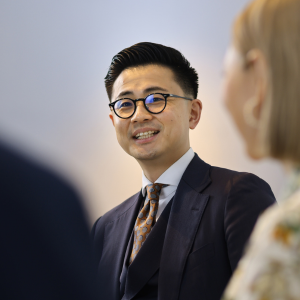
Kojima
We had been considering ways to enhance the value of embroidery, which inspired us to launch the “&T” project. While embroidery was once highly esteemed, it has become so commonplace that it is now sometimes difficult to appreciate it.. This shift in perception has had a direct impact on our business, which has been quite frustrating. Ou aim is to reintroduce the true value of embroidery to the public.
As a manufacturer, product development is crucial to us. Throughout the process of identifying challenges, exploring new approaches has occasionally sparked innovative ideas. With this in mind, we decided to launch the “&T” project.
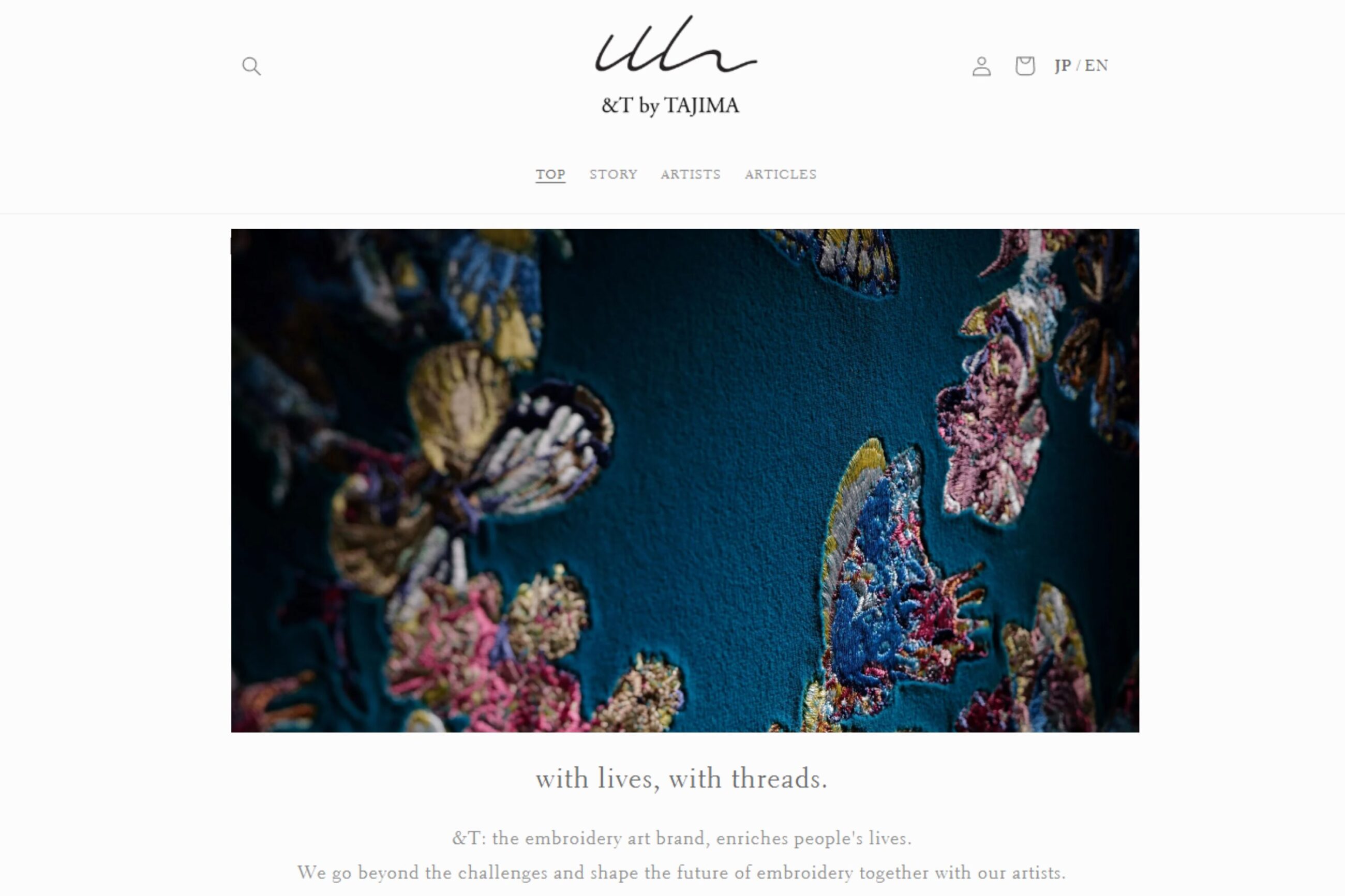
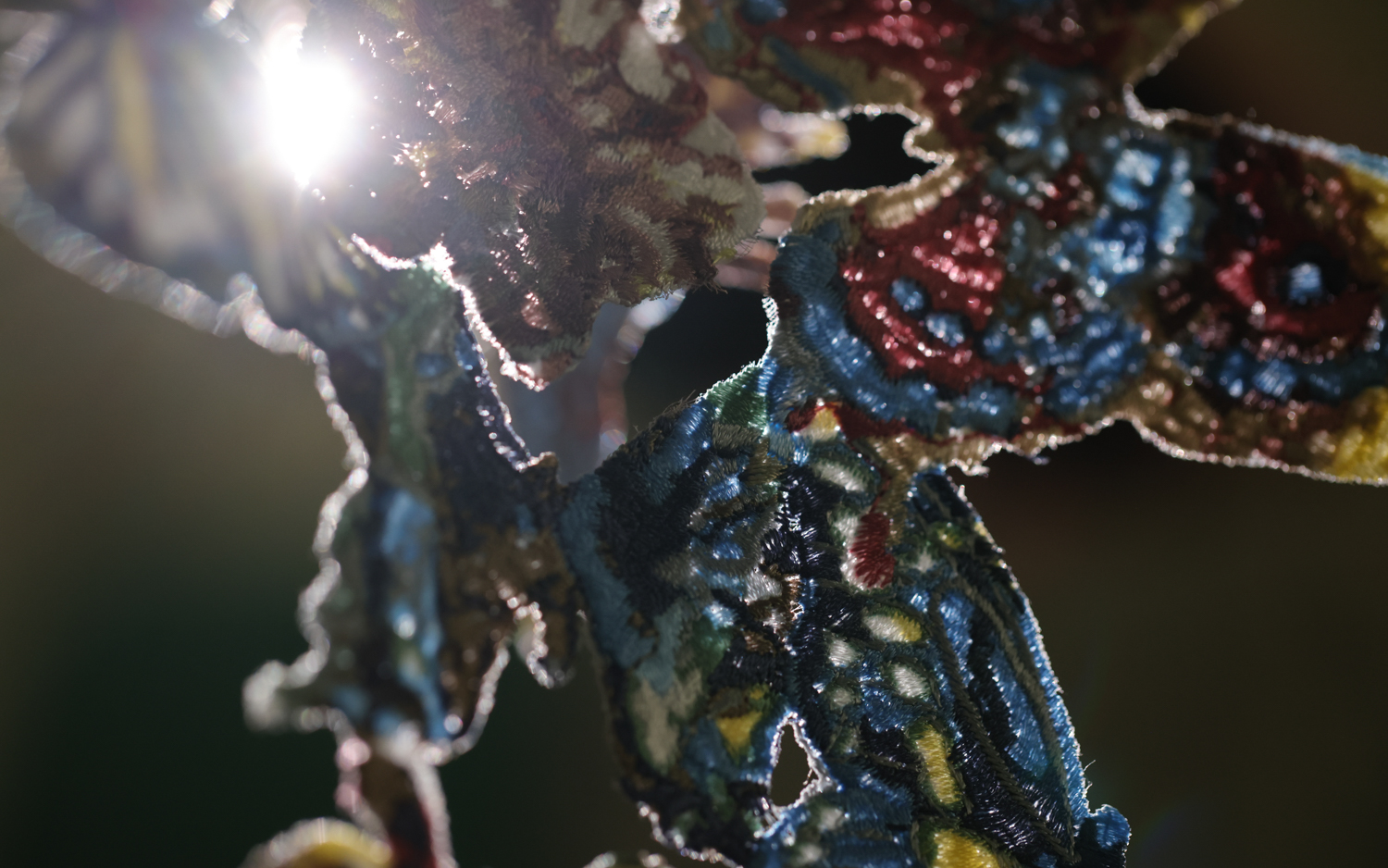
― What were your initial thoughts when you first heard about AT&T’s goals?”
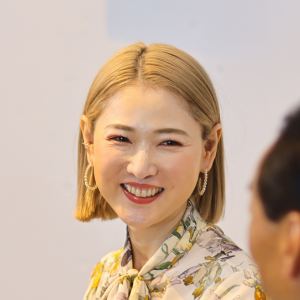
Otake
Historically, embroidery was a luxury item associated with nobility, giving it an inherently upper-class and luxurious image. With this in mind, I wanted to join this project to help elevate the value of embroidery.
Furthermore, I primarily work in the genre of Nihonga, or Japanese painting, where the colors are created by mixing individual mineral particles. It’s crucial to carefully manage the proportions when blending these pigments. Embroidery has some striking similarities. Individual threads, each a single color, can be mixed and combined to create a wide range of expressions depending on the color, thickness, and texture of the threads. These similarities to my work in Nihonga make this project especially interesting.

Kojima
I’m very happy to hear that. When we first saw your works, we thought we could create something wonderful by translating your paintings into embroidery.

Otake
I believe that transforming artworks into different forms presents an opportunity to make them more widely known. Additionally, for me personally, collaborating with companies provides a chance to learn about rules beyond the art industry and explore new worlds, making it a fascinating way to understand society.

Kojima
You mentioned that you had few opportunities to be directly involved in the embroidery industry. How did you feel when you learned about Tajima?

Otake
I could tell Tajima had amazing technological strengths. I see the various ways you experiment with applying those technologies, and I’d love to contribute to that domain.

― Please tell us how you actually began your collaboration with Ms. Otake.
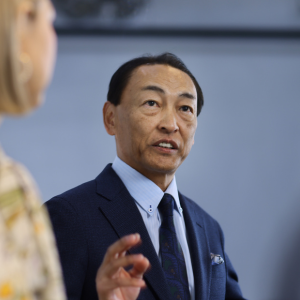
Tokuda
This all began when we first saw Ms. Otake’s solo exhibition and thought, “It might be challenging, but it would be interesting to embroider this work. ” I especially wanted to try embroidering three of her patterns. It was just something I was curious about, but Ms. Otake ended up placing orders for two of them. I was genuinely thrilled about that.

Otake
It was a perfect match, wasn’t it?
Focusing on materials and using thread made from fishing nets recovered from marine debris
― Ms. Otake, did you make any requests in creating the pieces?

Otake
Initially, I suggested using thread made from fishing nets recovered from marine debris, as I believe materials are extremely important. Knowing of a company that produces cloth with environmentally friendly thread, I introduced them to Tajima. It seems that Tajima has since developed an embroidery thread in collaboration with that company.”
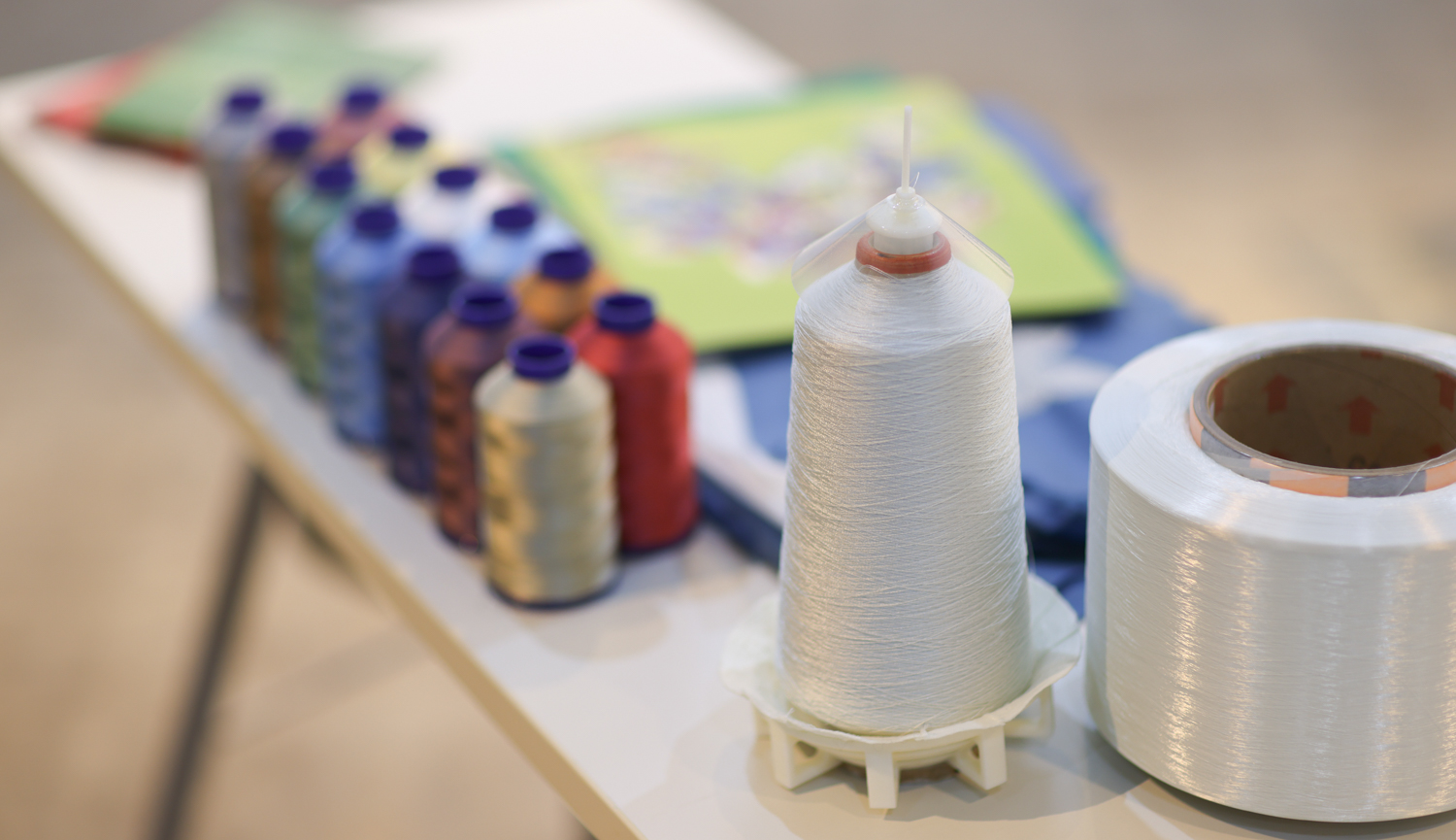

Tokuda
That’s right. When I touched the thread, I thought, “There’s nothing we can’t do with this.” There’s a company in Ishikawa Prefecture that spins thread. So, I visited them, specified the twist count, and together we developed a thread suitable for embroidery.”

Otake
This is how a wish to do something was turned into a reality.

Tokuda
Of course, there were difficulties in achieving this, and we also needed improve the embroidery machines as well.
The fabric and embroidery thread derived from fishing nets used in this project is made of nylon. Because nylon threads tend to stretch and shrink easily, the threads did not tighten during embroidery, causing frequent looping. Based on past experience, we thought that looping would be less likely to occur if the fabric was lifted off the needle plate, so we made a special frame for this purpose. As a result, I was able to sew beautifully without looping.
― What did you find to be difficult, Mr. Tokuda?

Tokuda
As Ms. Otake mentioned earlier, embroidery involves meticulously arranging each individual thread, and determining the direction of the threads for each butterfly was very time-consuming. Selecting the colors was also challenging.
For example, consider the color white: there are various shades used for highlights, unbleached whites, and whites that are almost beige. We experimented with many different shades of white alone.
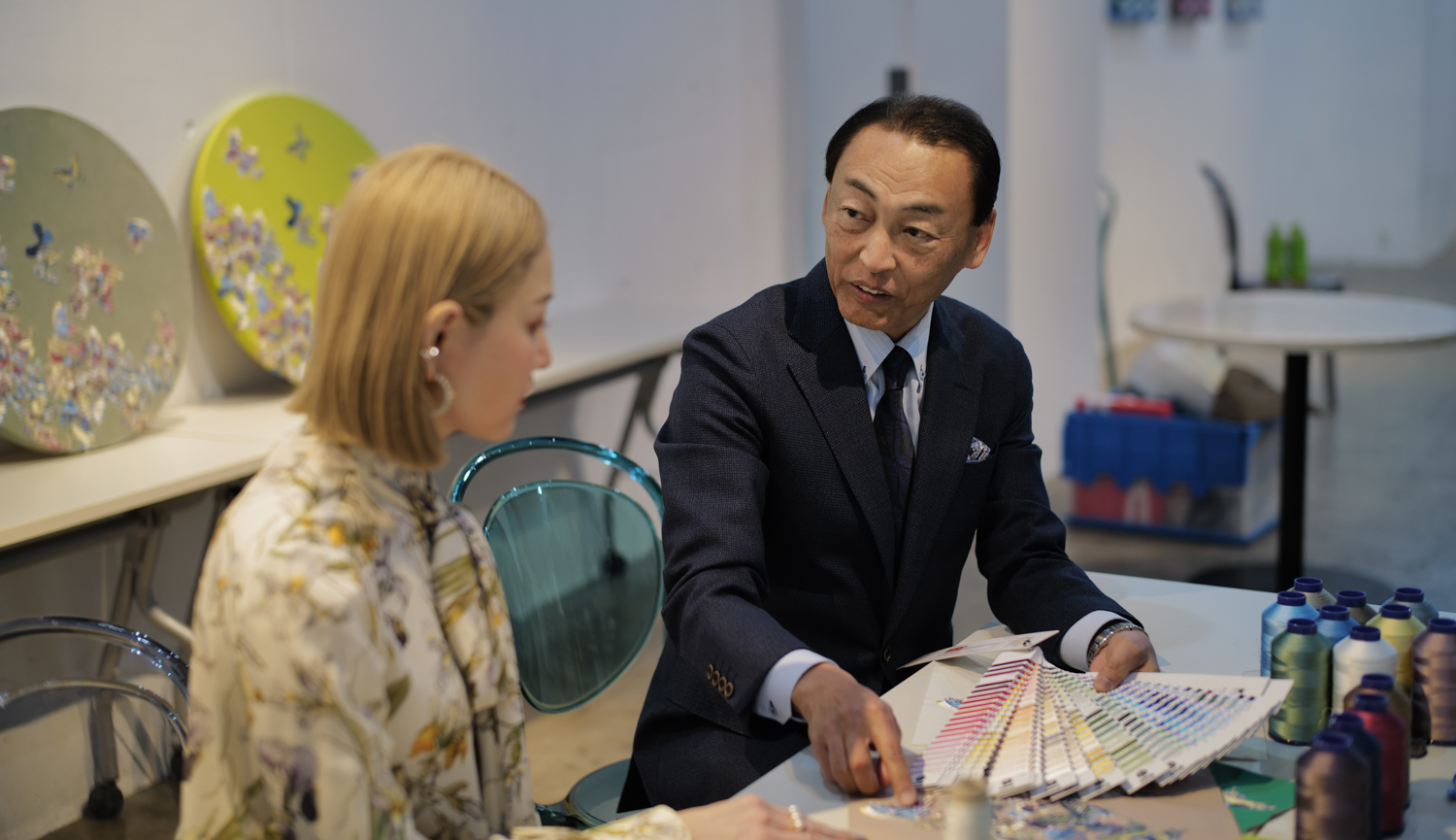
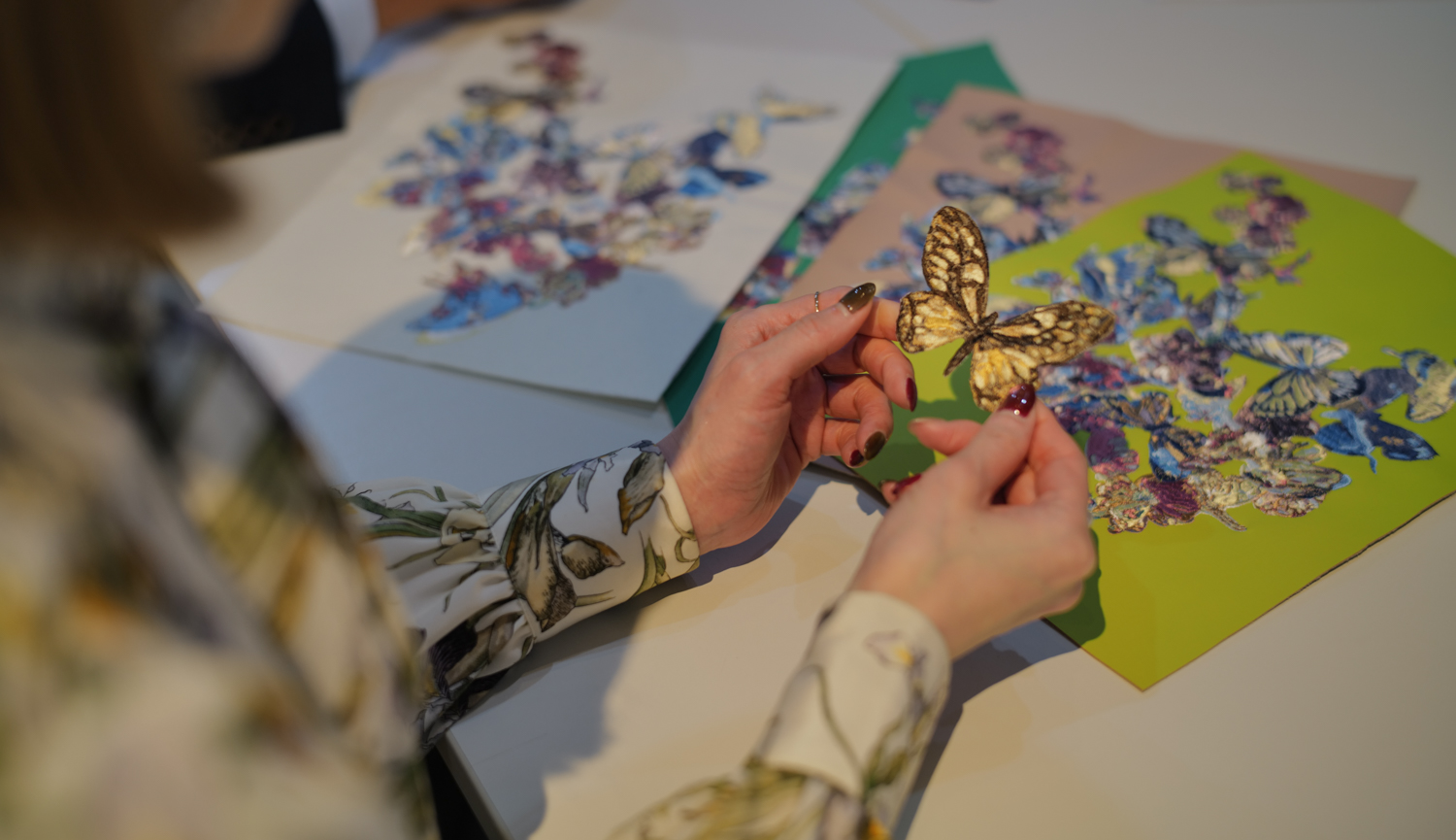
― How many trial pieces did you make?

Tokuda
Quite a few. I can’t recall exactly how many days it took to get the initial color. For instance, to reproduce the blue from the original design, we started by buying thread and wondering, “Is this the right color?” However, the thread itself often didn’t match the original design. So, we ended up purchasing three shades: one darker, one lighter, and one that we thought might be close. While we could confirm which threads were closest to the original design, we couldn’t determine how they would look until we actually embroidered the piece.
― Are the colors judged completely by human eye?

Tokuda
Yes, they are judged by eye. We rely on our own eyes to assess and make adjustments in the embroidered works. Initially, we selected 13 colors for the piece, but Ms. Otake wanted to reduce the intensity of some colors, so we toned down four of them. Through this process, we were able to achieve the desired colors.

Otake
After embroidering the piece, I felt that the tone of the combined colors was too intense. We adjusted the intensity and made several changes, going back and forth until we achieved the right balance.
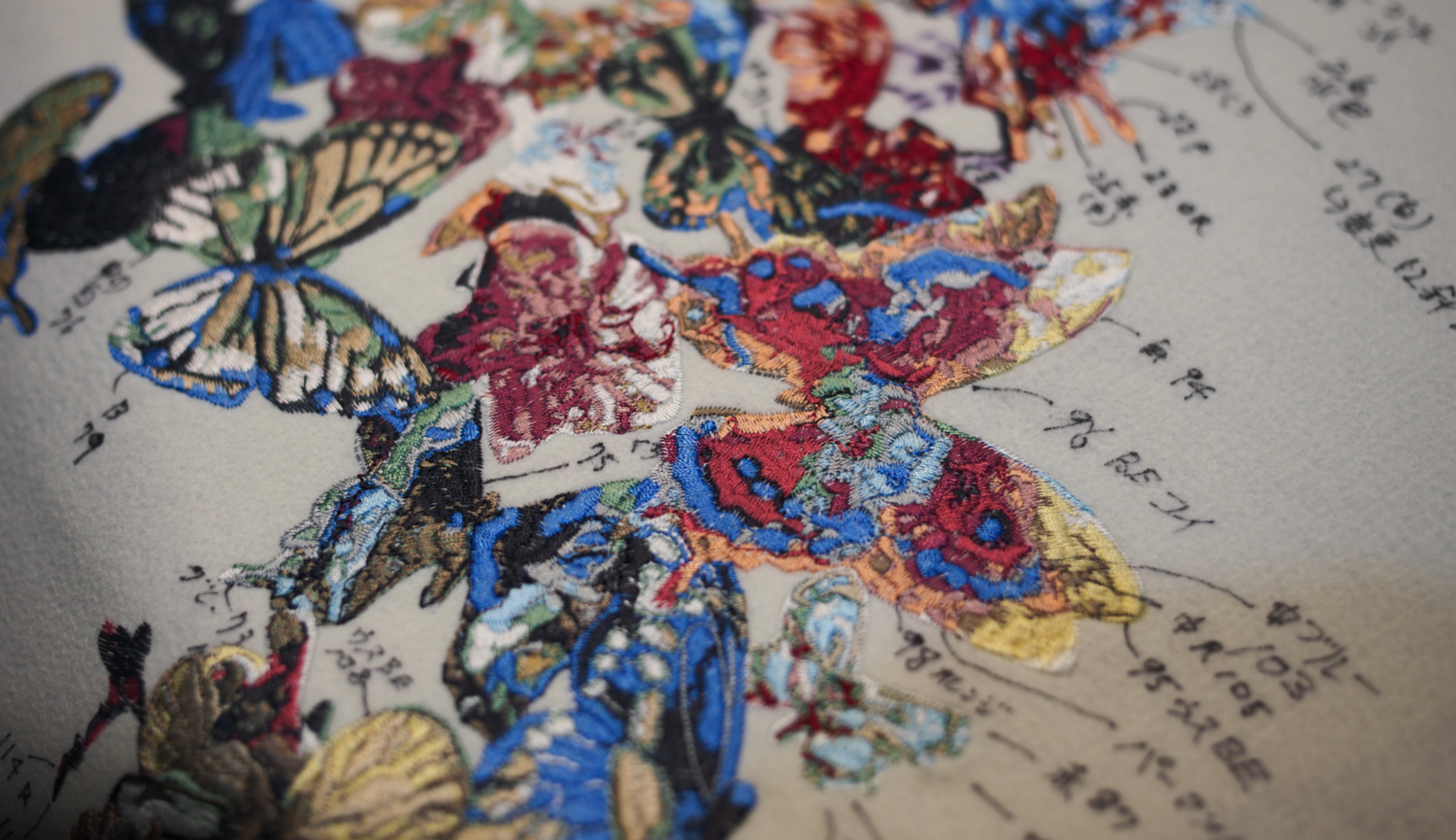

Kojima
I believe that both Mr. Ohtake and we made repeated adjustments without making any compromises, which resulted in this wonderful work.

Otake
I was surprised by the attention to even the smallest details and the high quality. It really exceeded my expectations.

Tokuda
I completely understood everything Ms. Otake mentioned, and it made me want to make improvements immediately.
― Was this your first time creating a work using embroidery?

Otake
Yes, it was. I was surprised by how much embroidery can accomplish and how accurately the data was translated into the piece. I realized that almost anything is possible. On the other hand, I was concerned that the quality might be too high and that the piece could end up looking too commercial. Finding the right balance is challenging.
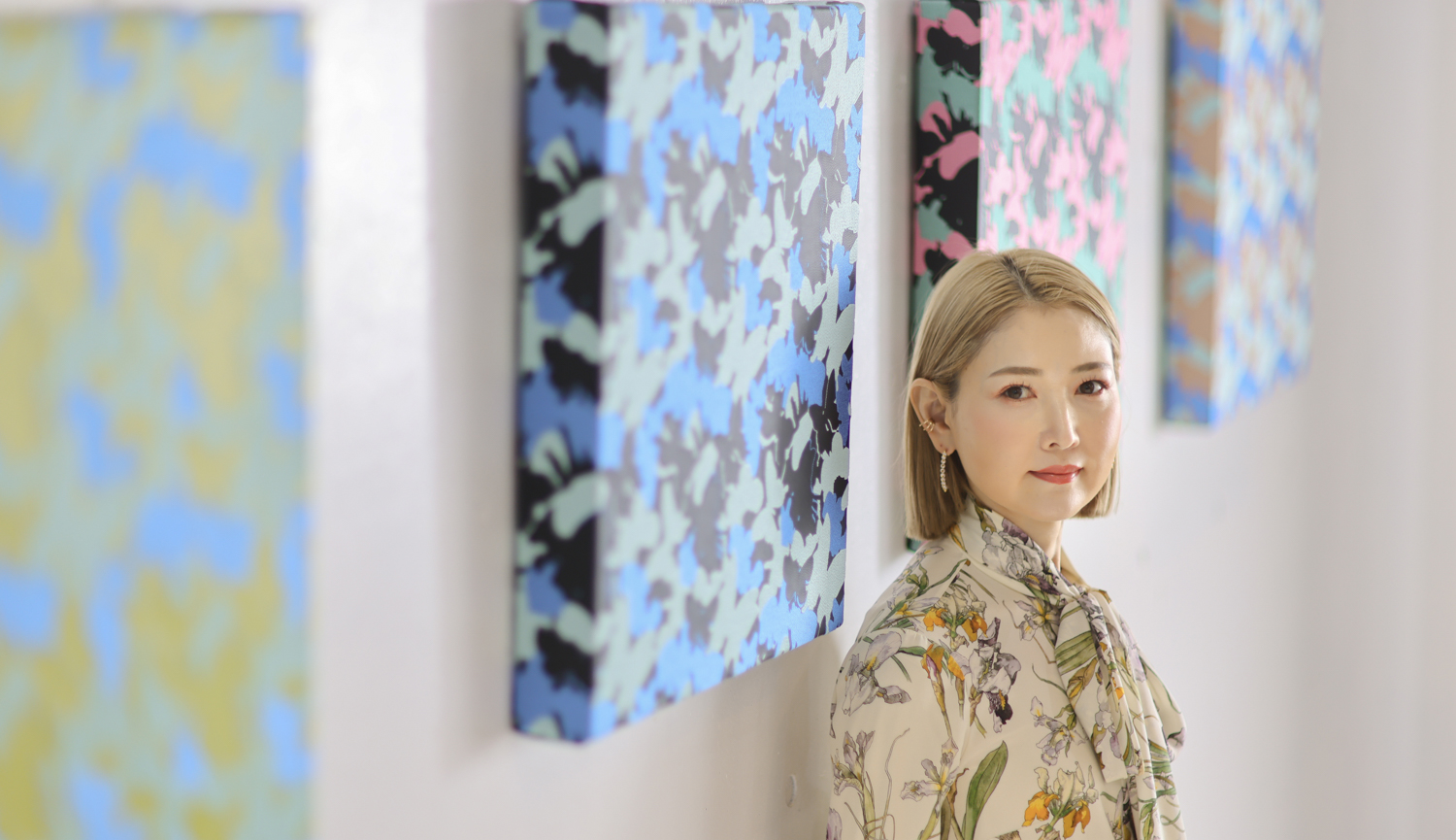
Works that impart the warmth and texture of embroidery

Kojima
By using the embroidery method of expression this time, we believe it is an opportunity to convey a different appeal from Ms. Ohtake’s usual works.
On top of that, there were some things that we proposed to you.

Otake
Yes. Mr. Tokuda came up with the idea that it might be preferable to make the stitches visible.
― What do you think of the actual finished work, Ms. Otake?

Otake
In a word, it’s wonderful. Using a different technique to give shape to my work has led to a new discovery of how it can “look this way.” I believe it has highlighted the warmth and depth of embroidery. Instead of portraying butterflies and flowers realistically, incorporating my paintings made the embroidery of these elements somewhat more abstract. The unique process of digitizing an existing artwork and transforming it into data resulted in some intriguing expressions.
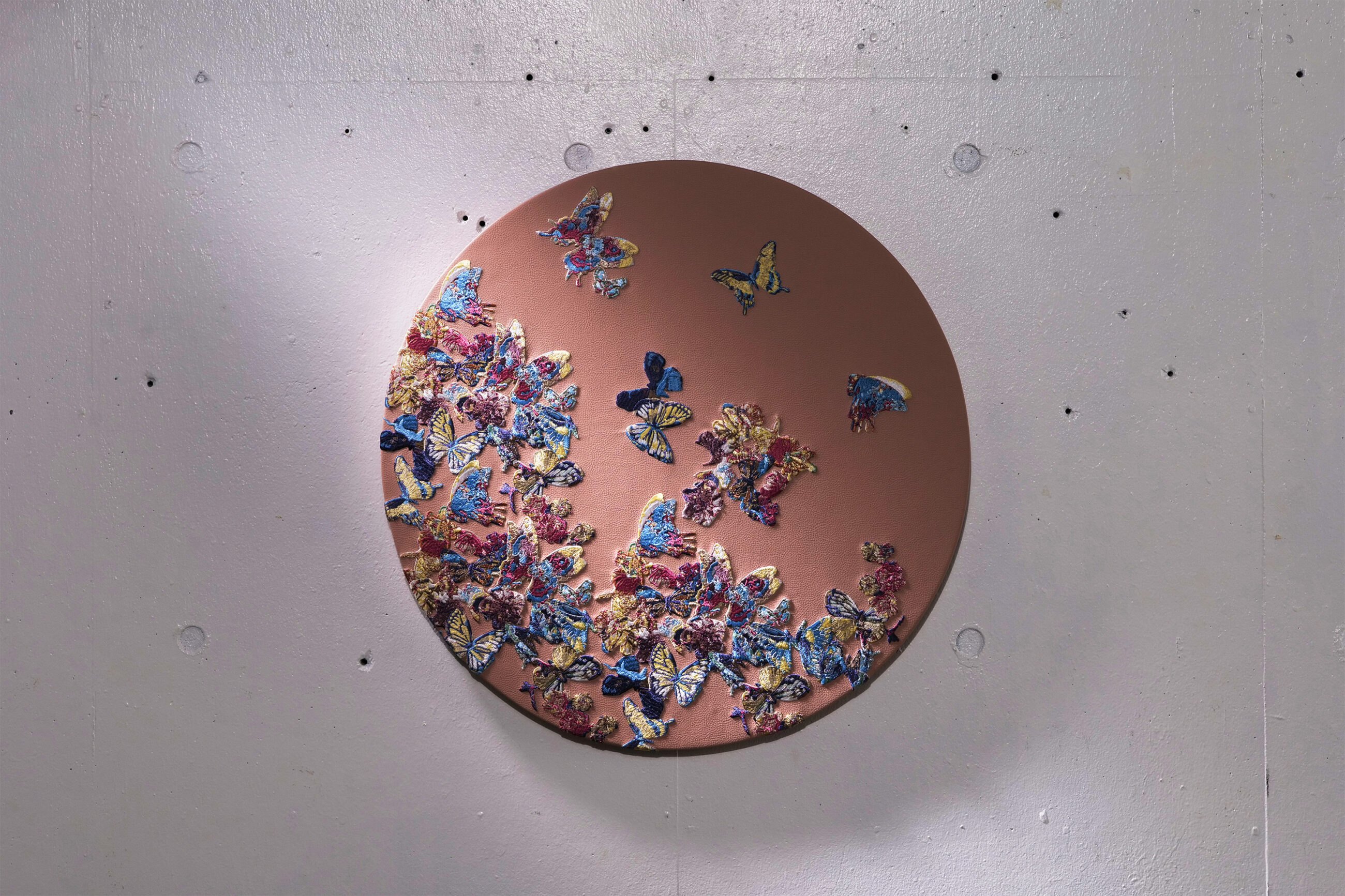
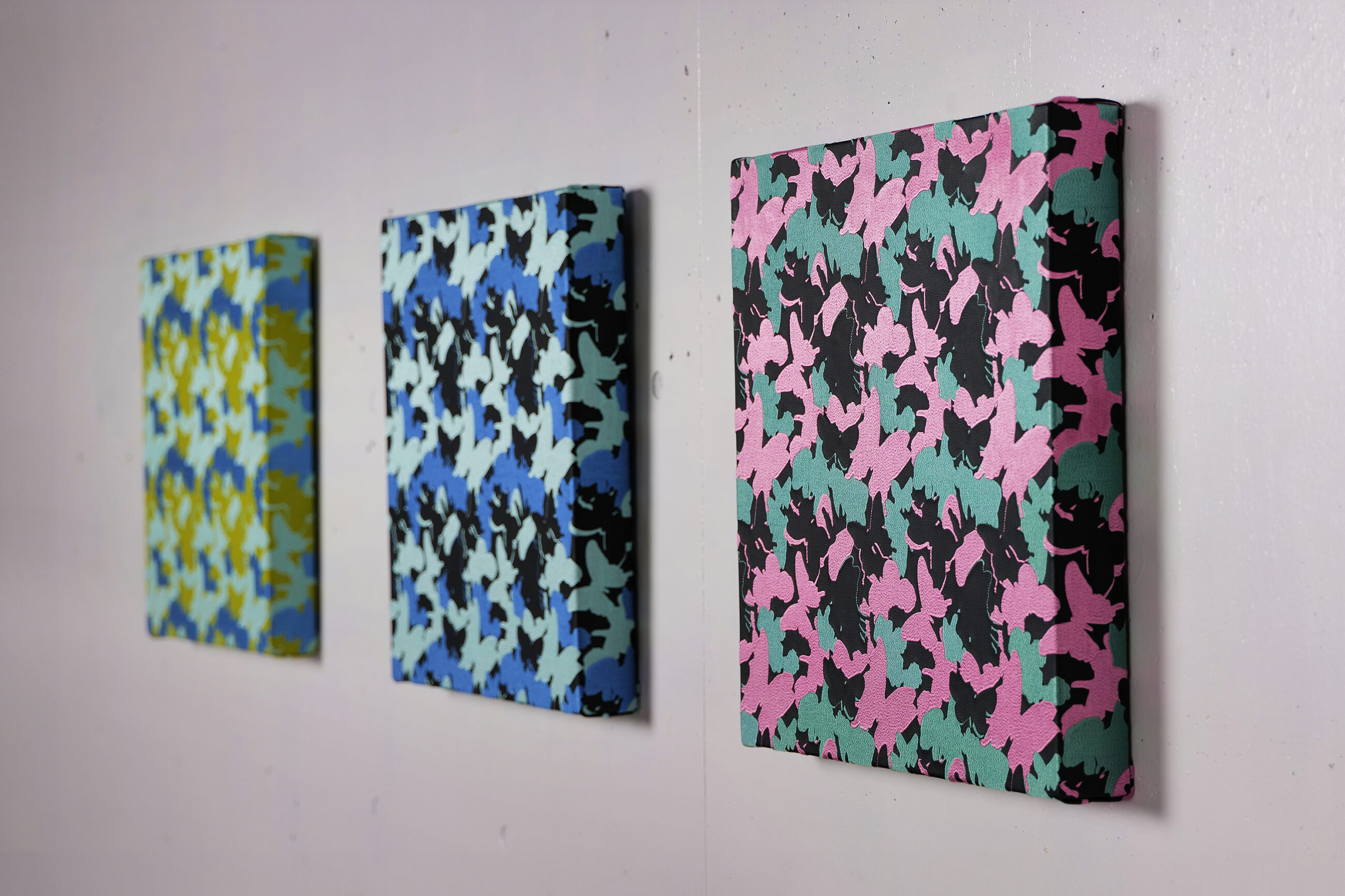
― You also presented a “signature model” at the art event in October. What kind of work is it?

Otake
I created a work that can be touched. For the installation, I designed the immersive artwork with layers of fabric that people can walk through, while also allow them to view individual images. When I visited Tajima’s factory, I was impressed by a cutting-edge technology that lights up LEDs when the embroidery is touched. I explored ways to incorporate this technology, such as making butterflies light up when touched. My goal was to create works that allow people to feel the warmth and texture of embroidery through touch, evoking a range of emotions and thoughts.”
― President Kojima, who do you hope to reach with this work and the “&T” initiative?

Kojima
First of all, I hope it reaches Ms. Otake’s fans and others who appreciate art. We are encouraged by the recognition of our embroidered works from art lovers. I was anxious about the outcome until I saw the finished product, but thanks to everyone involved, we have achieved a truly impressive result. I believe we have created something that can be fully recognized as art. I am confident that the fusion of embroidery and contemporary art will open up new possibilities for creative expression.
We also hope that through this work, you will rediscover the delicacy and beauty of embroidery and re-evaluate its value. We hope that the fusion of embroidery and contemporary art will open up new creative possibilities and, at the same time, reaffirm the original appeal of embroidery.
